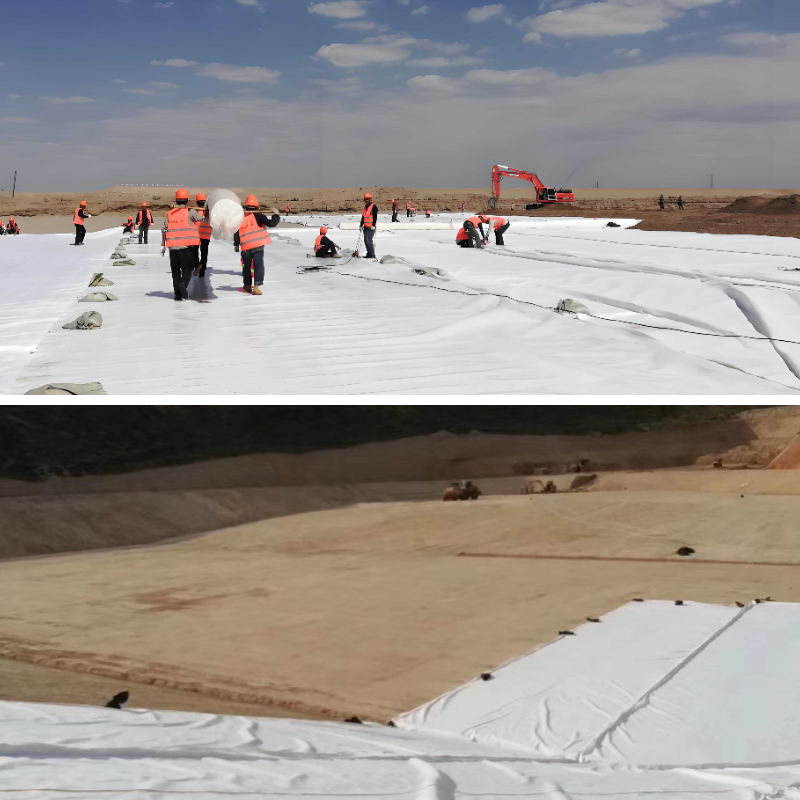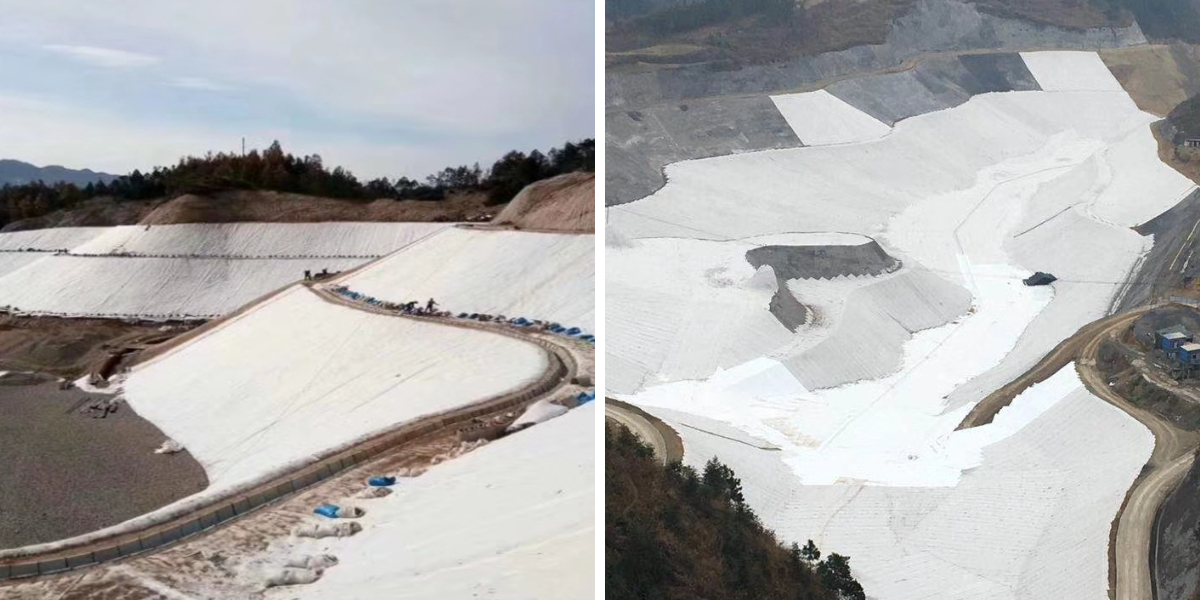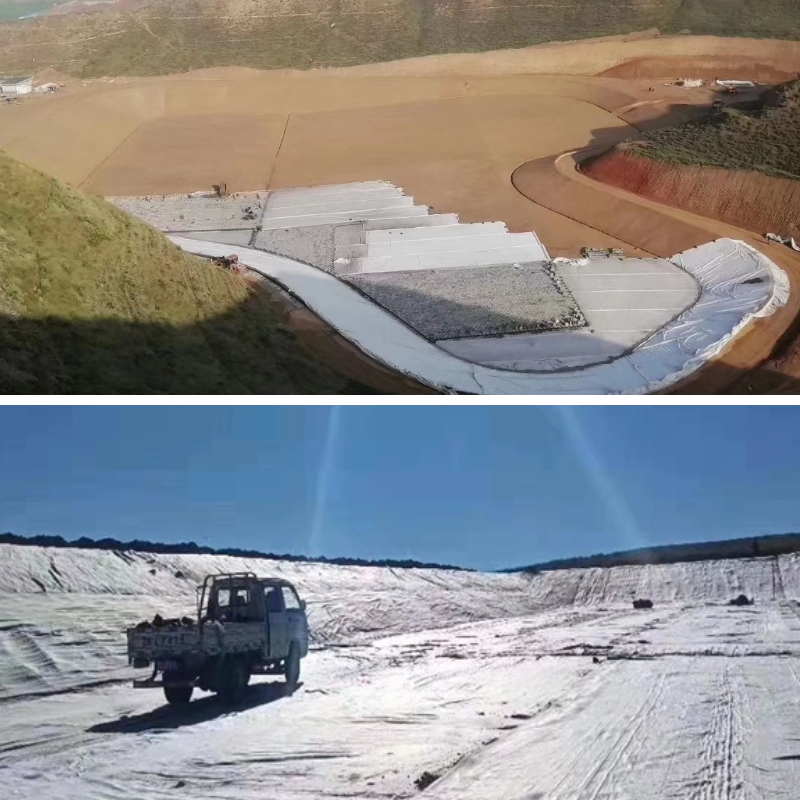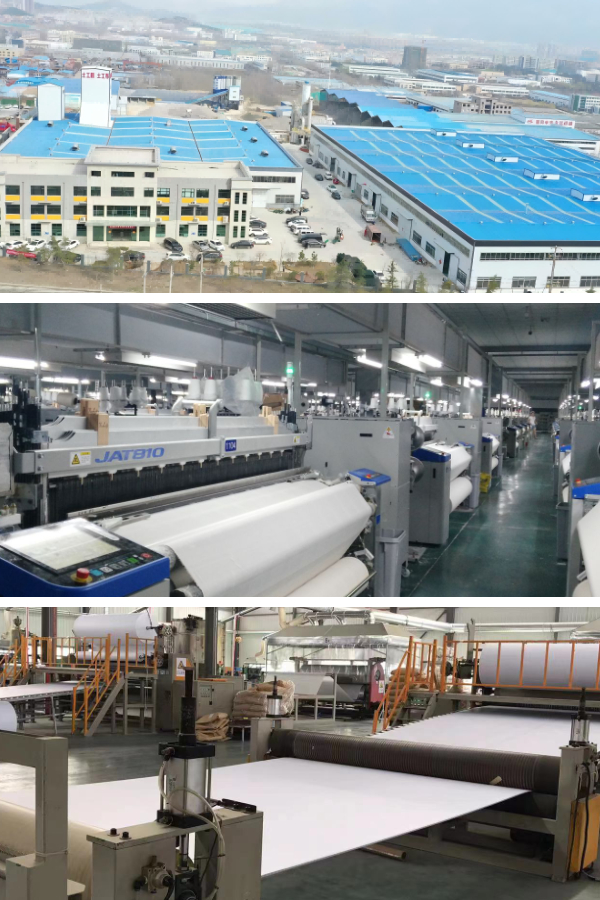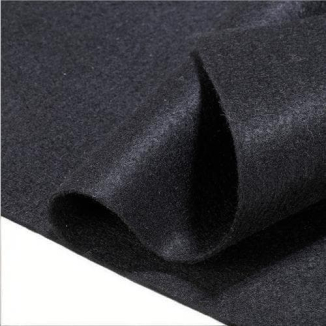Geotextiles for Retaining Walls: Reinforcement Techniques & Installation Best Practices
Introduction to Geotextiles in Retaining Walls
Retaining partitions play a essential function in civil engineering projects, supplying guide to soil hundreds and stopping soil erosion. Geotextiles have emerged as imperative substances in the building of conserving walls, providing a vary of advantages that decorate the steadiness and sturdiness of these structures. Geotextiles, additionally regarded as geotech cloth or geo cloth, are artificial substances designed to engage with soil and different geotechnical materials. They are used in a range of applications, such as preserving walls, to enhance the overall performance of the soil and the standard structure.
Nonwoven geotextile fabric, a kind of geotextile, is made from randomly oriented fibers that are bonded together. This development offers it special properties, such as excessive permeability and precise filtration capabilities, making it specially appropriate for use in maintaining walls. Nonwoven geotextile material can separate exclusive soil layers, stop the migration of high-quality particles, and permit water to drain thru whilst preserving the soil in place. This helps to hold the integrity of the keeping wall and forestall troubles like soil liquefaction and slope failure.
In current construction, the use of geotextiles in keeping partitions has turn out to be an increasing number of famous due to their fee - effectiveness and environmental friendliness. They are lightweight, convenient to install, and can appreciably minimize the want for regular building substances like concrete and steel, for this reason minimizing the environmental have an impact on of development projects.
Reinforcement Techniques with Geotextiles
Understanding the Role of Geotech Fabric in Reinforcement
Geotech fabric, a key kind of geotextile, performs a necessary position in the reinforcement of protecting walls. Its main feature is to beautify the steadiness of the soil - wall system. When established inside the backfill of a preserving wall, geotech cloth acts as a reinforcement element. It will increase the shear electricity of the soil by means of supplying tensile resistance. As the soil exerts lateral strain on the wall, the geotech material resists this pressure, stopping the soil from deforming or sliding.
For example, in a granular soil backfill, the geotech cloth is laid in horizontal layers at ordinary intervals. The material interlocks with the soil particles, developing a composite structure. This composite shape distributes the load extra evenly throughout the preserving wall, lowering the stress attention points. By doing so, it can stop the wall from tilting or collapsing due to immoderate pressure. Additionally, the excessive tensile power of geotech cloth lets in it to face up to giant pulling forces, making sure the lengthy - time period steadiness of the preserving wall.
How Geo Cloth Contributes to Wall Stability
Geo material has countless vital features that make a contribution appreciably to the steadiness of keeping walls. One of its key roles is to stop soil erosion. When rainwater hits the backfill soil of a holding wall, there is a hazard of the soil particles being washed away. Geo fabric acts as a barrier, stopping the nice soil particles from being carried away by using the runoff. This is specifically essential in areas with excessive rainfall or the place the soil is effortlessly erodible.
Moreover, geo fabric improves the bond between the soil and the protecting wall. It affords a floor for the soil particles to adhere to, improving the frictional forces between them. In a protecting wall system, a suitable bond between the soil and the wall is critical for universal stability. For instance, in a maintaining wall made of concrete blocks, the geo fabric positioned between the blocks and the soil backfill helps to switch the load greater efficiently from the soil to the wall. This reduces the possibility of the soil - wall interface failing, which ought to lead to the displacement of the wall or the slumping of the backfill.
Nonwoven Geotextile Fabric: A Key Player in Reinforcement
Nonwoven geotextile material has special houses that make it a vital cloth for the reinforcement of preserving walls. One of its major benefits is its excessive permeability. This lets in water to drain freely thru the material whilst preserving the soil particles. In a conserving wall, appropriate drainage is critical to stop the construct - up of hydrostatic pressure. If water accumulates in the back of the wall, it can expand the lateral strain on the wall, probably main to its failure. Nonwoven geotextile material permits the water to seep through, lowering this risk.
Another essential attribute of nonwoven geotextile cloth is its flexibility. It can conform to the irregularities of the soil floor and adapt to small moves inside the preserving wall system. This flexibility helps to keep the integrity of the reinforcement even when the soil experiences minor settlements or expansions. For example, in a conserving wall constructed on a barely compressible soil foundation, the nonwoven geotextile material can modify to the small vertical displacements of the soil besides dropping its reinforcement effectiveness. Additionally, its potential to bond nicely with distinctive kinds of soils makes it a versatile desire for a extensive vary of holding wall building projects.
Installation Best Practices
Pre - set up Preparations
Before putting in geotextiles in a holding wall, numerous indispensable pre - set up preparations are essential. First and foremost, the development web site wants to be entirely prepared. This includes clearing the vicinity of any debris, rocks, or vegetation that may want to intrude with the desirable set up of the geotextile. For example, if there are massive rocks on the floor the place the geotextile will be laid, they may want to puncture the nonwoven geotextile fabric, rendering it ineffective.
Accurate measurements of the maintaining wall vicinity are additionally vital. The dimensions of the wall will determine the quantity and measurement of the geotextile needed. Measuring the length, height, and width of the backfill location exactly helps in ordering the right volume of geotech cloth or geo cloth, decreasing waste and making sure a suitable fit.
Selecting the gorgeous geotextile is a quintessential step. Consider the precise necessities of the holding wall project, such as the kind of soil, the predicted water flow, and the degree of reinforcement needed. For a holding wall in a excessive - water - go with the flow area, a geotextile with excessive permeability, like nonwoven geotextile fabric, would be an perfect choice. It can successfully drain water whilst keeping the soil, stopping hydrostatic strain construct - up. Additionally, test the pleasant of the geotextile upon delivery. Look for any signs and symptoms of damage, such as tears or holes, as these can compromise its performance.
Step - with the aid of - Step Installation Process
The set up of geotextiles in a keeping wall follows a unique sequence of steps. Start by means of unrolling the geotextile alongside the base of the preserving wall, making sure that it is laid out flat and except wrinkles. For example, if the usage of geo cloth, cautiously unroll it from one stop of the wall to the other, making certain it lies evenly on the ground.
Next, invulnerable the geotextile in place. This can be performed the use of stakes, nails, or different appropriate fastening methods. Place the fasteners at normal intervals, usually each few feet, to preserve the geotextile firmly in position. In sandy soils, longer and greater stakes may additionally be required to hold the geotextile from shifting.
As the backfill fabric is added, proceed to unroll and impervious the geotextile in layers. Each layer of the geotextile ought to overlap the preceding one via a ample amount, commonly round 12 to 18 inches. This overlap ensures a non-stop and high-quality reinforcement system. When including the backfill, be cautious no longer to injury the geotextile. Use gear with suitable tires or tracks and keep away from dragging heavy objects throughout it.
If the use of nonwoven geotextile fabric, pay interest to its orientation. The cloth must be mounted with the right aspect dealing with the soil to maximize its filtration and separation properties. For instance, the rougher facet can also be higher perfect to have interaction with the soil, imparting a higher bond and stopping soil particles from migrating.
Quality Control for the duration of Installation
Quality manipulate all through the set up of geotextiles in protecting partitions is fundamental to make sure the lengthy - time period overall performance of the structure. Regular inspections must be carried out in the course of the set up process. Check that the geotextile is correct aligned, besides any gaps or overlaps that are too small or too large. If there are any wrinkles or folds in the geotech fabric, they need to be smoothed out immediately, as these can minimize its effectiveness.
Verify the integrity of the fasteners. Make positive they are firmly in vicinity and no longer loose. Loose fasteners can permit the geotextile to move, which might also lead to failure of the reinforcement system. Additionally, test for any signs and symptoms of harm to the geotextile throughout the backfilling process. If a tear or puncture is detected, restore it right away the usage of an suitable patch or alternative section.
Another vital element of pleasant manipulate is making sure that the set up follows the sketch specifications. The spacing of the geotextile layers, the overlap distance, and the kind of geotextile used need to all suit the sketch plan. Deviations from the layout can compromise the balance and performance of the conserving wall. By imposing strict exceptional manage measures for the duration of installation, the reliability and sturdiness of the geotextile - strengthened maintaining wall can be notably enhanced.
Benefits of Using Geotextiles in Retaining Walls
Long - time period Durability
Geotextiles substantially make contributions to the long - time period sturdiness of holding walls. Materials like geotech fabric, geo cloth, and nonwoven geotextile material are designed to stand up to the harsh stipulations inside a holding wall system. They are resistant to chemical degradation from resources in the soil, such as salts and acids, which can corrode common development substances over time. For example, nonwoven geotextile fabric, made from artificial fibers, does now not rot or decay like herbal materials, making sure that the reinforcement and filtration features it offers continue to be advantageous for many years.
Moreover, geotextiles can adapt to the herbal settling and motion of the soil besides dropping their structural integrity. As the soil underneath and round a keeping wall experiences adjustments due to factors like moisture fluctuations and visitors vibrations, the bendy nature of geotextiles lets in them to stretch and bend with the soil. This adaptability prevents the geotextile from being damaged, therefore keeping its capacity to support the wall and forestall soil erosion. By improving the balance of the keeping wall and defending it from the damaging consequences of soil motion and chemical attack, geotextiles play a vital function in extending the provider existence of the whole structure.
Cost - effectiveness
Using geotextiles in protecting partitions gives big value - effectiveness. Firstly, they decrease the want for giant quantities of traditional, greater highly-priced building materials. For instance, in some cases, geotextiles can be used to support soil, permitting for a limit in the quantity of concrete or metal required for a holding wall. This no longer solely cuts down on the preliminary fabric prices however additionally reduces the charges related with transporting and managing heavy development materials.
Secondly, geotextiles make a contribution to decrease renovation expenses over the existence of the keeping wall. Their capability to stop soil erosion and enhance drainage skill that there is much less probability of the wall experiencing harm from soil displacement or water - associated issues. For example, a nicely - established nonwoven geotextile cloth can forestall the construct - up of water strain in the back of the wall, which ought to in any other case lead to cracking or collapse. By minimizing the want for pricey repairs and maintenance, geotextiles furnish lengthy - time period fee financial savings for keeping wall proprietors and operators.
Environmental Advantages
Geotextiles have quite a few environmental blessings when used in conserving walls. One of the key advantages is their position in lowering soil erosion. Geo cloth, for example, acts as a bodily barrier that prevents soil particles from being washed away by way of rainwater or runoff. In areas with sloping terrain or close to water bodies, this is mainly vital as it helps to defend the surrounding surroundings from sediment pollution. By protecting the soil in place, geotextiles additionally assist to hold the integrity of herbal ecosystems, stopping the loss of topsoil that is indispensable for plant growth.
In addition, geotextiles are frequently made from recyclable materials, which aligns with cutting-edge environmental sustainability goals. Their use in holding wall building reduces the demand for virgin materials, such as massive quantities of quarried stone or newly produced concrete. This, in turn, helps to preserve herbal sources and decrease the environmental have an impact on related with the extraction and manufacturing of common building materials. Overall, the environmental benefits of geotextiles make them a desired preference for environmentally mindful building projects.
Case Studies
Case 1: Roadside Retaining Wall Reinforced with Geotech Fabric
In a dual carriageway building challenge in a hilly area, a keeping wall used to be wished to guide the soil alongside the roadside. Geotech material used to be chosen for reinforcement due to its excessive tensile electricity and capability to face up to the lateral stress from the soil. The challenge concerned a 50 - meter - lengthy protecting wall with a peak of three meters.
During installation, the geotech material was once laid in horizontal layers at 0.5 - meter intervals inside the backfill soil. The material was once cautiously unrolled and secured to the wall the use of distinctive fasteners designed for geotextiles. The backfill fabric was once a granular soil, which interlocked properly with the geotech fabric.
After construction, the maintaining wall has been in carrier for over 5 years. Monitoring statistics indicates that the wall has remained stable, with no signs and symptoms of tilting or cracking. The geotech material has correctly resisted the lateral strain from the soil, and there has been no giant soil erosion. This case demonstrates the effectiveness of geotech material in reinforcing roadside protecting walls, making sure the security and steadiness of the motorway infrastructure.
Case 2: Residential Landscape Retaining Wall with Geo Cloth
A residential property with a sloping outdoor required a holding wall to create a flat region for a garden. Geo fabric was once used in the building of the keeping wall, which used to be 20 meters lengthy and 1.5 meters high. The predominant intention used to be to stop soil erosion and grant a steady base for the garden.
The set up technique commenced with getting ready the website by using putting off the pinnacle - layer of grass and free soil. The geo material was once then unrolled alongside the base of the wall and prolonged up the slope. It was once staked down firmly to forestall movement. As the backfill material, a combination of topsoil and compost was once used. Each layer of backfill used to be compacted earlier than including the subsequent layer of geo cloth.
Over the years, the protecting wall has now not solely efficiently retained the soil but has additionally better the aesthetic attraction of the backyard. The backyard on pinnacle of the wall has thrived, and there have been no troubles with soil slipping or waterlogging. This case indicates that geo material can be an great desire for small - scale residential keeping wall projects, imparting each practical and aesthetic benefits.
Case 3: Riverbank Retaining Wall Using Nonwoven Geotextile Fabric
In a riverbank stabilization project, nonwoven geotextile material used to be employed to assemble a keeping wall. The vicinity was once susceptible to excessive water glide for the duration of the wet season, and soil erosion used to be a main concern. The preserving wall used to be designed to be eighty meters lengthy and 2.5 meters high.
The nonwoven geotextile material was once chosen for its excessive permeability, which allowed water to drain via whilst preserving the soil. It used to be set up in a way that it shaped a non-stop filter layer between the soil and the river. The material was once laid in more than one layers, with every layer overlapping the preceding one by using 15 inches.
Since its construction, the keeping wall has withstood countless heavy - rainfall activities and excessive - water - stage periods. The nonwoven geotextile cloth has efficaciously filtered out the soil particles from the water runoff, stopping sediment from getting into the river. This has now not solely blanketed the riverbank from erosion however has additionally extended the water exceptional of the river. This case highlights the significance of nonwoven geotextile material in conserving wall tasks in areas with excessive water float and erosion risks.
Conclusion
In conclusion, geotextiles, together with geotech fabric, geo cloth, and nonwoven geotextile fabric, have revolutionized the development of preserving walls. Their reinforcement methods substantially beautify the steadiness of holding walls, resisting lateral stress and stopping soil erosion. The excessive tensile power of geotech fabric, the soil - bonding and erosion - prevention houses of geo cloth, and the permeability and flexibility of nonwoven geotextile material all make contributions to a greater sturdy and dependable keeping wall structure.
Proper set up is equally crucial. Thorough pre - set up preparations, a properly - performed step - through - step set up process, and strict satisfactory manipulate throughout set up are necessary to make certain the full performance of geotextiles in preserving walls. By following these high-quality practices, the lengthy - time period overall performance of the preserving wall can be maximized.
The advantages of the usage of geotextiles in maintaining partitions are substantial. They provide lengthy - time period durability, withstanding chemical and bodily stresses over time. Geotextiles are additionally fee - effective, lowering fabric and renovation costs. Moreover, their environmental advantages, such as soil erosion prevention and recyclability, make them an eye-catching preference for sustainable construction.
The case research introduced have similarly verified the sensible effectiveness of geotextiles in quite a number maintaining wall applications, from motorway and residential initiatives to riverbank stabilization. As building science continues to evolve, the use of geotextiles in keeping partitions is predicted to come to be even greater widespread. Their versatility, performance, and environmental friendliness role them as key substances in future civil engineering projects, making sure the safety, stability, and sustainability of protecting wall structures.
Contact Us
Company Name: Shandong Chuangwei New Materials Co., LTD
Contact Person :Jaden Sylvan
Contact Number :+86 19305485668
WhatsApp:+86 19305485668
Enterprise Email: cggeosynthetics@gmail.com
Enterprise Address: Entrepreneurship Park, Dayue District, Tai 'an City,
Shandong Province


